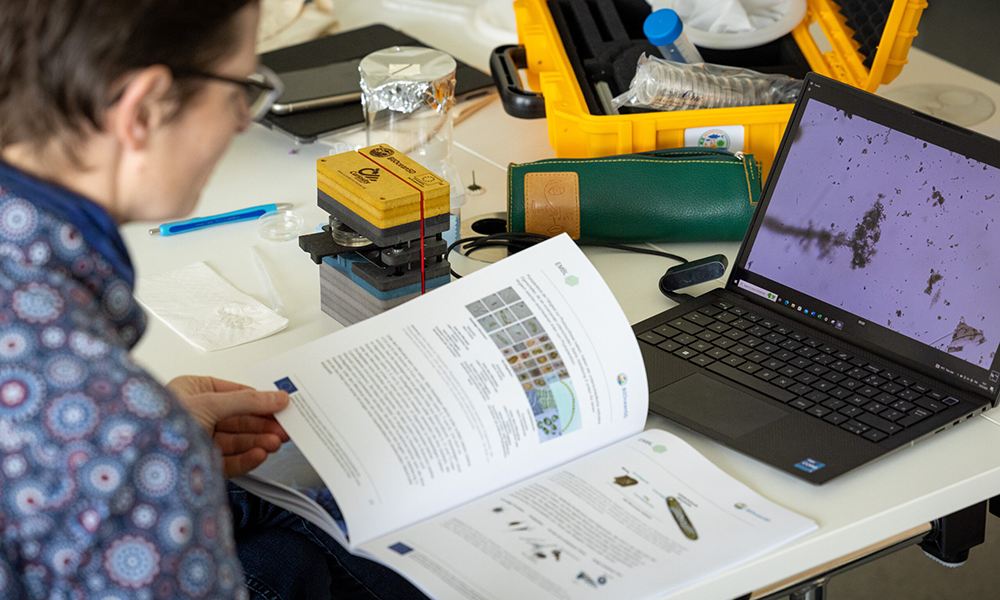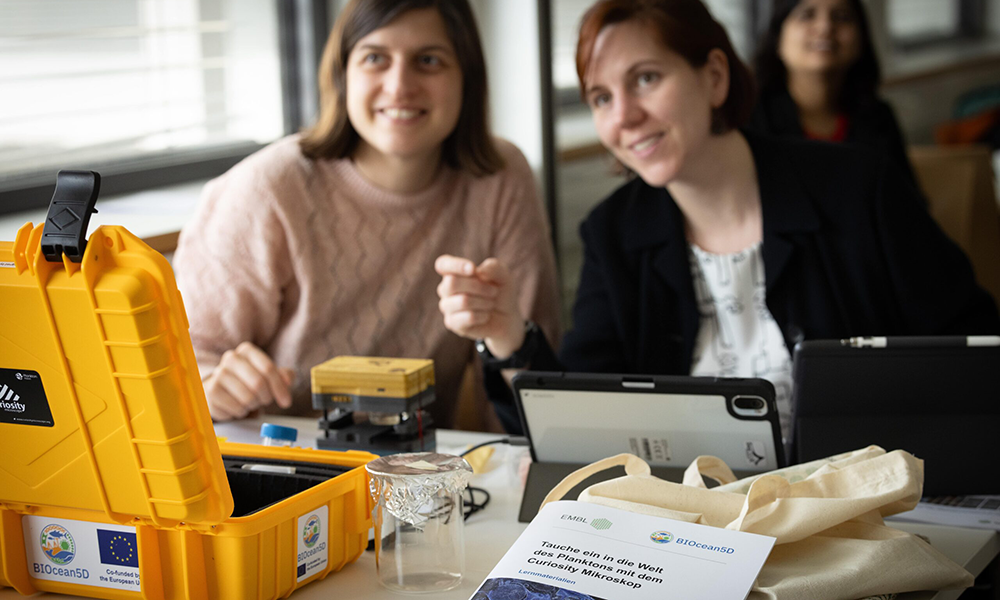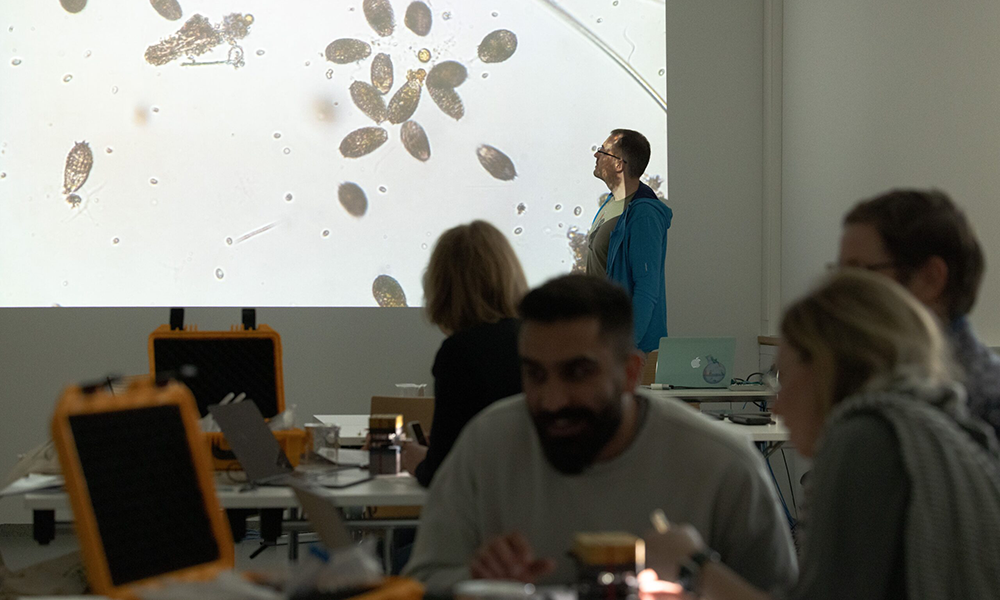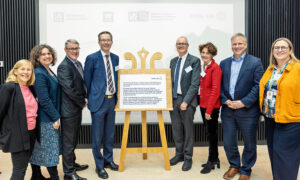
Sparking curiosity: the Curiosity microscope
EMBL-coordinated project BIOcean5D ran its first workshop for teachers, helping to bring inland communities closer to marine science and ocean literacy

BIOcean5D is an EMBL-coordinated project that unites 31 institutes to address pressing global challenges on marine biodiversity. Joining forces with TREC, BIOcean5D will generate data and knowledge to sustainably measure, understand, value, and predict how marine biodiversity changes across the 5 dimensions of space, time and human activities.
In March, the project ran its first workshop for teachers, featuring the Curiosity microscope.
By Emily Farthing
“Whether you’re a student, a researcher, or simply a curious individual – the Curiosity microscope provides a user-friendly platform to explore the microscopic world with clarity and detail,” describes research engineer Noan Le Bescot, president of SeaLabX and member of Plankton Planet.
Noan is also the co-inventor of the Curiosity microscope – a remarkable tool that combines simplicity with high resolution technology, to enable users to capture detailed images and movies of microscopic samples. “The Curiosity microscope can be used for a wide range of applications, from scientific research to educational purposes,” Noan elaborates. “With its adjustable magnification levels and various imaging modes, users can tailor their microscopy experience to suit their needs.”
Together with EMBL, BIOcean5D is working with the team at Plankton Planet to bring the Curiosity microscope to high schools across Europe, along with a suite of learning materials that empower teachers to bring their students closer to marine biology and biodiversity.
In March, the project ran its first Curiosity microscope workshop at EMBL Heidelberg, with a group of teachers from local high schools. “I was struck by the very strong enthusiasm of the participants,” Noan describes. “By the end of the session, already the first ideas of using the microscope in their teaching were beginning to emerge, such as during school trips.”

From the pond to the ocean
From climate regulation to the air that we breathe, everyone depends on marine ecosystem services – even if they’re not exposed to the sea on a regular basis. This workshop fits into our activation of inland communities who may not be otherwise engaged with the importance of ocean conservation, and our wider efforts contributing to an ocean-literate society – which you can read about here.
During the session, teachers were introduced to the Curiosity microscope and a suite of ready-to-go teaching activities, before collecting and analysing samples from a nearby pond. “Just a few drops of water contained such great diversity of lifeforms. Our pond was teeming with life,” says Efraim Culfa, a teaching and learning officer at EMBL who co-led the workshop with Noan.
“We’re surrounded by many different types of water bodies, all connected to our World Ocean by the water cycle,” Efraim explains, highlighting how you don’t have to be close to the sea to learn about aquatic ecosystems. “They have many different properties – but also share many similarities.” For example, Efraim describes how marine and freshwater systems are both affected by environmental changes, and experience acidification in response to increased atmospheric carbon dioxide levels. In both cases, this will affect underwater life. Exploring how changes like these affect biodiversity is an important aspect of BIOcean5D.
But while marine and freshwater ecosystems are both brimming with microscopic, planktonic life and share planktonic organisms that can be found in both, “one dramatic difference is that the diversity of organisms you find in a pond is more limited due to its size compared to the vast marine ecosystems,” Efraim explains.
Inspired by these differences, perhaps, one workshop participant plans to take the Curiosity microscope on their next school field trip, to observe underwater life further afield. Unlike conventional microscopes, the device lends itself to this sort of excursion – its lightweight, closed-system design doesn’t rely on an external energy source and can be used right next to the sampling site.

Valuing ocean literacy
This workshop is an example of how we work with our partners and collaborators – like EMBL, Fondation Tara Océan and Plankton Planet – to deploy hands-on, immersive tools, so that everyone can appreciate the value of marine life.
“Not only does the Curiosity microscope help to teach the public concepts linked to ocean culture, it also enriches the learning experience for students – which in turn, encourages curiosity and promotes scientific inquiry,” says Noan. “Providing schools with equipment like this promotes educational equity by ensuring all students have access to the same learning opportunities, and can lay the foundation for their future academic and professional pursuits.”
“Science and society depend on and benefit from each other. It’s very important to show teachers and educators that science isn’t happening in a vacuum, and that members of society are not excluded from advances,” says Efraim. “Disseminating tools like the Curiosity microscope is a great way to achieve this.”
With grateful thanks to all participating teachers for their enthusiasm and for taking part in this pilot workshop, and to our partner organisations and collaborators – particularly EMBL, Fondation Tara Océan and Plankton Planet, for enabling the delivery of such materials to engaged schools.
This article has been adapted from an article on the BIOcean5D news page.
BIOcean5D is co-funded by the European Union (Horizon Europe), with Swiss and UK partners receiving funding from Swiss and UK governments, respectively.


